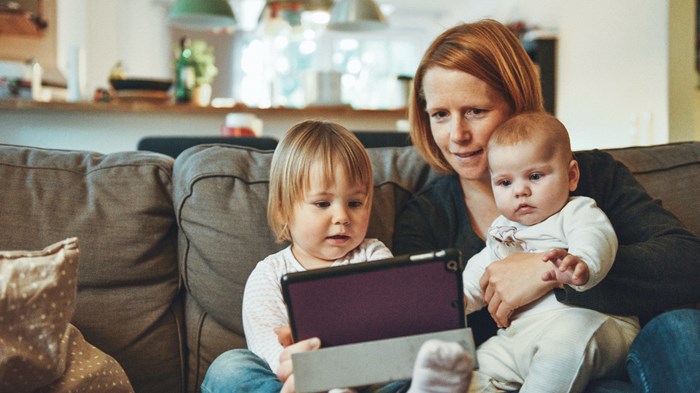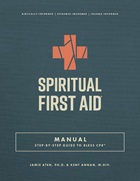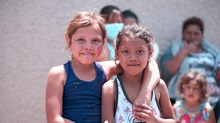Surprising Ways 2020 Disruptions Have Led to Relational Innovations

2020 was one of, if not the most stressful, disappointing, and disruptive years on record. We lost jobs and said goodbye (remotely) to friends and family members. As office buildings and schools closed, we created work spaces in the corners of our bedrooms and transformed our dining rooms into classrooms. Normal no longer existed.
And yet, it’s not been all bad news.
Just as disruption in the supply chain creates opportunities for innovation in the business world, the disruptive nature of the pandemic has prompted adaptation and innovation in our marriages and families.
Radical Shifts
As academic institutions shut down or went remote, parents’ responsibilities expanded exponentially. Single-parent households, parents who lacked the option of working from home, and families with special needs children felt the shift most acutely.
Regina and Jua Robinson have four children between the ages of eight and fourteen, one of whom has Down syndrome. The five education specialists who normally support their son’s education all went virtual requiring both parents to reorganize their job schedules so they could fill in the gaps and accommodate his many needs.
She admits, “I spent many days juggling work crises as a dean of student affairs while wrestling with feelings of anxiety and helplessness regarding my son’s cognitive delays. Check-ins and hand-offs between me and Jua were critical during this time.”
Michelle Swaim had nine children at home during the early months of the pandemic. She recalls, “The first phase was bedlam. Imagine trying to keep track of nine different sets of passwords for Zoom classes and homework portals. Not to mention having enough computers for each kid. My husband and I were stressed to the max.”
Under-resourced communities have had to deal with even greater challenges. According to Clinical Psychologist Dr. Zorangeli Ramos who serves Latino families in the Boston area, “Families experienced a terrible financial hit due to the pandemic. Many lost their jobs or the family breadwinner. Loss of connection with extended family and social contacts in school has affected the mental health of children.”
Surprising Gains
According to Dr. Ramos, provided they can access support, families in every demographic have been innovating during this past year.
She observed that, “When these families’ basic needs are provided for, they are very motivated to grow. Those with internet access are learning how to connect with other family members and services. Those who can gain support from therapy are eager to try new ways of communicating to resolve conflicts and maintain unity. Another way people are adapting is by examining their assumptions about their roles within the family. For example, a mom of adult children who is understanding that she is not responsible for fixing her family members' problems.”
This kind of resilience and malleability have helped us to avoid some of the dire predictions made in the pandemic’s early months.
Last spring, pundits assumed that divorce rates would skyrocket but a study done by Bowling Green State University shows that divorce rates have actually dropped 33% in four of the five states studied from March through September.
One survey indicated that marital contentment and happiness have risen over the past twelve months. It stated that “58% of married men and women said that the pandemic has made them appreciate their spouse more.” Perhaps our shared fragility fosters gratitude.
Positive shifts also seem to be occurring in the spiritual realm. Dr. Ramos notes that, “Those in the Latino community who identified as religious continue to cite their faith as one of the main sources of strength during these tough times.” A PEW Research study reported that “Twenty-four percent of Americans say that their faith has grown during the first few months of the pandemic.” These statistics reflect similar trends during previous disasters, such as 9/11.
Wheaton College Professor and Executive Director of Humanitarian Disaster Institute Dr. Jamie Aten confirms that Americans tend to turn to their spiritual beliefs to help them navigate. He explains:
When adversity like the pandemic strikes, it can seemingly turn our world upside down, creating what some scholars refer to as a meaning violation. When this occurs, science shows people regularly look to faith as a meaning-making-system for finding hope, purpose, comfort, and even greater sense of control in uncertain times.
In recent prospective longitudinal studies we’ve conducted with disaster survivors and COVID-19 survivors, our findings suggest that the virtue of spiritual fortitude may be the key to understanding and unlocking an enduring faith. Spiritual fortitude helps us to metabolize our suffering, find purpose in our challenges, draw on spiritual resources, and still do good even in the face of life's disasters.
Spiritual fortitude not only helps us to find meaning, but also motivates us to grow and make us more aware of other’s needs.
Creating Something New
Despite the massive disruption of the past year, one of the most common comments I keep hearing from families is, “I don’t want to go back to normal.” Which begs the question: what would a new, healthier normal look like?
Because the pandemic has eliminated or severely restricted many of our social and recreational habits, it has opened up the possibility of doing life differently. One crucial precursor to change is identifying that something is amiss. When couples begin to have honest conversations about what’s working and what’s not working, it will allow them to pinpoint problematic areas and avoid getting stuck in criticism or blame.
Sometimes relational dynamics are so deeply entrenched that couples lack the imagination and/or the determination to do things differently. Theologian and author Janine Langan believes that simply imagining something new is, in and of itself, “an act of hope.” Hope then gives us traction to change.
One iteration of a new normal would be less frantic. Many American families have assumed that their children won’t succeed unless they participate in after-school tutoring, music lessons, and/or athletics: starting as young as pre-K. While these efforts might boost SATs scores or increase foreign language fluency, according to psychologist Dr. Peter Gray, the unrelenting activism is just as likely to result in anxiety, indifference, and burn-out. The slow-down of the past twelve months has allowed some households to discover the benefit of unstructured time. Time will tell if families will choose to go back to the old normal—or find their way to something new.
Evidence of adaptation and transformation is also visible in how we’re interacting within our homes and how we’re engaging with the community at large.
Regina and Jua’s children are all assigned a day for kitchen management and they all prep meals, which can now happen throughout the school day thanks to remote learning. They also created thank you cards for front-line workers. Another family has been hosting regular, social-distanced, mask-wearing hang-outs around their fire pit despite the frigid, New England winters. A California grandmother reads books with her eight and eleven year-old neighbors—through a fence—once a week. In addition to going to marriage counseling with her husband to address issues that surfaced during the pandemic, Michelle now coordinates and delivers four vans worth of groceries to a food bank in one of the hardest-hit communities.
The past twelve months have been devastating and heartbreaking. If in the midst of our pain, we can stay present to God and draw from his strength, we should discover the motivation to shore up the weak spots in our marriages, re-calibrate family dynamics, and discover how we can better serve our neighbors. We will never be able to recoup many of our losses—but we will be able to see God’s redemptive work in our lives.
Dorothy Littell Greco is the author of Marriage in the Middle and Making Marriage Beautiful. When she's not writing or making photos, Dorothy loves to go for long walks and lazy kayaks with her husband of 30 years. You can find more of her work on her website.
The Better Samaritan is a part of CT's
Blog Forum. Support the work of CT.
Subscribe and get one year free.
The views of the blogger do not necessarily reflect those of Christianity Today.






















